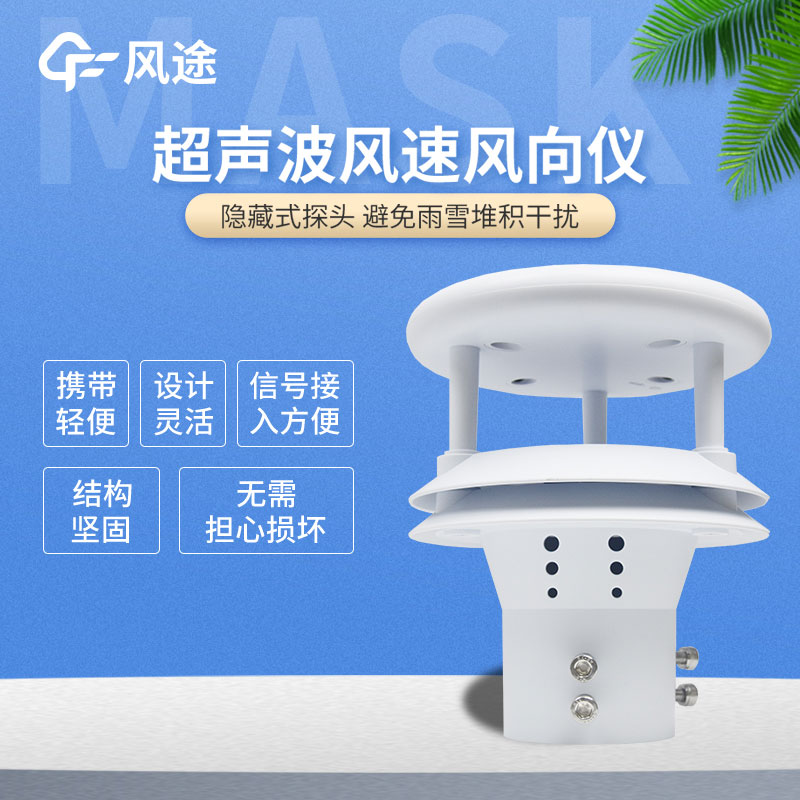Shandong Fengtu IOT Technology Co., Ltd
Sales Manager:Ms. Emily Wang
Cel,Whatsapp,Wechat:+86 15898932201
Email:info@fengtutec.com
Add:No. 155 Optoelectronic Industry Accelerator, Gaoxin District, Weifang, Shandong, China

Sales Manager:Ms. Emily Wang
Cel,Whatsapp,Wechat:+86 15898932201
Email:info@fengtutec.com
Add:No. 155 Optoelectronic Industry Accelerator, Gaoxin District, Weifang, Shandong, China
time:2023-09-18 17:26:18 source:Weather Station viewed:623 time
A wind sensor is a sensor device used to measure and record the direction of the wind, usually in the fields of meteorology, environmental monitoring and agriculture. It calculates the wind direction by measuring the wind speed and, based on the principles of hydrodynamics. These sensors usually provide wind direction data in real time or at regular intervals, and are important for weather forecasting, wind energy utilization, aviation safety, and agricultural production.
Why measure wind speed?
Measuring wind direction is an important area of study in meteorology that can help us better understand and predict climate conditions. In meteorology, wind direction refers to the direction of air movement on earth, which reflects the direction and speed of atmospheric flow. By measuring the wind direction, we can get the following information:
1. Climate analysis: wind direction is crucial for analyzing climate conditions. For example, an area is affected by strong northeast winds, which means that the area may be experiencing strong cold air currents. By measuring the wind direction, we can understand the source, strength and trend of these air currents, and thus predict future climate conditions.
2. Atmospheric circulation: Atmospheric circulation is an important part of the global climate system, which influences the ecological environment on earth by regulating temperature, humidity, precipitation and other elements between different regions. Measuring wind direction can help us better understand the movement patterns of atmospheric circulation and thus predict climate change and extreme weather events.
3. Aviation and navigation safety: In aviation and navigation, wind direction is crucial to flight safety and route selection. For example, during flights, pilots need to know the local wind direction and speed in order to choose appropriate flight routes and landing sites. In addition, wind has a great impact on the stability and speed of ships, so measuring wind direction is crucial to ship safety.
4. Agriculture and forestry: Wind direction has a great impact on agriculture and forestry production. For example, in agriculture, proper wind direction helps grain ripening and harvesting, while strong winds may cause crops to fall and reduce yields. In forestry, wind direction affects the direction of growth and canopy structure of trees, thus affecting the ecological balance of forests.
5. Environmental monitoring: Measuring wind direction can help us understand the diffusion and spread of atmospheric pollutants, thus providing a scientific basis for environmental protection and governance. For example, in the monitoring of urban air pollution, wind direction data can help us determine the source and scope of pollution more accurately, and provide a basis for the development of air quality improvement measures.
In summary, measuring wind direction is of great significance in many fields such as meteorology, climate analysis, atmospheric circulation, aviation and navigation safety, agriculture and forestry, and environmental monitoring. Through the study of wind direction, we can better understand the operation law of the earth's climate system and contribute to global sustainable development.

In today's agricultural production, moisture monitoring system is playing an increasingly important role. Like a guardian, it keeps an eye on the condition of the soil and provides farmers with timely and accurate information to help them rationally utilize water resources and improve the yield...
How much do we know about dissolved oxygen? Today, let’s introduce relevant knowledge about dissolved oxygen sensors. Measuring dissolved oxygen concentration is required in fields such as medicine, chemistry, environmental monitoring, marine analysis, molecular biotechnology, biological process co...
weather instrument is mainly used to monitor and record various physical parameters in the atmospheric environment. It is composed of meteorological data acquisition, transmission, analysis and processing system....
In the process of agricultural development will be affected by a variety of factors, such as rainfall, etc., rainfall in a year is uniform, to ensure the growth of crops, on the contrary, uneven rainfall, there will be drought, flooding and other disasters, bringing great harm to the growth of crops...